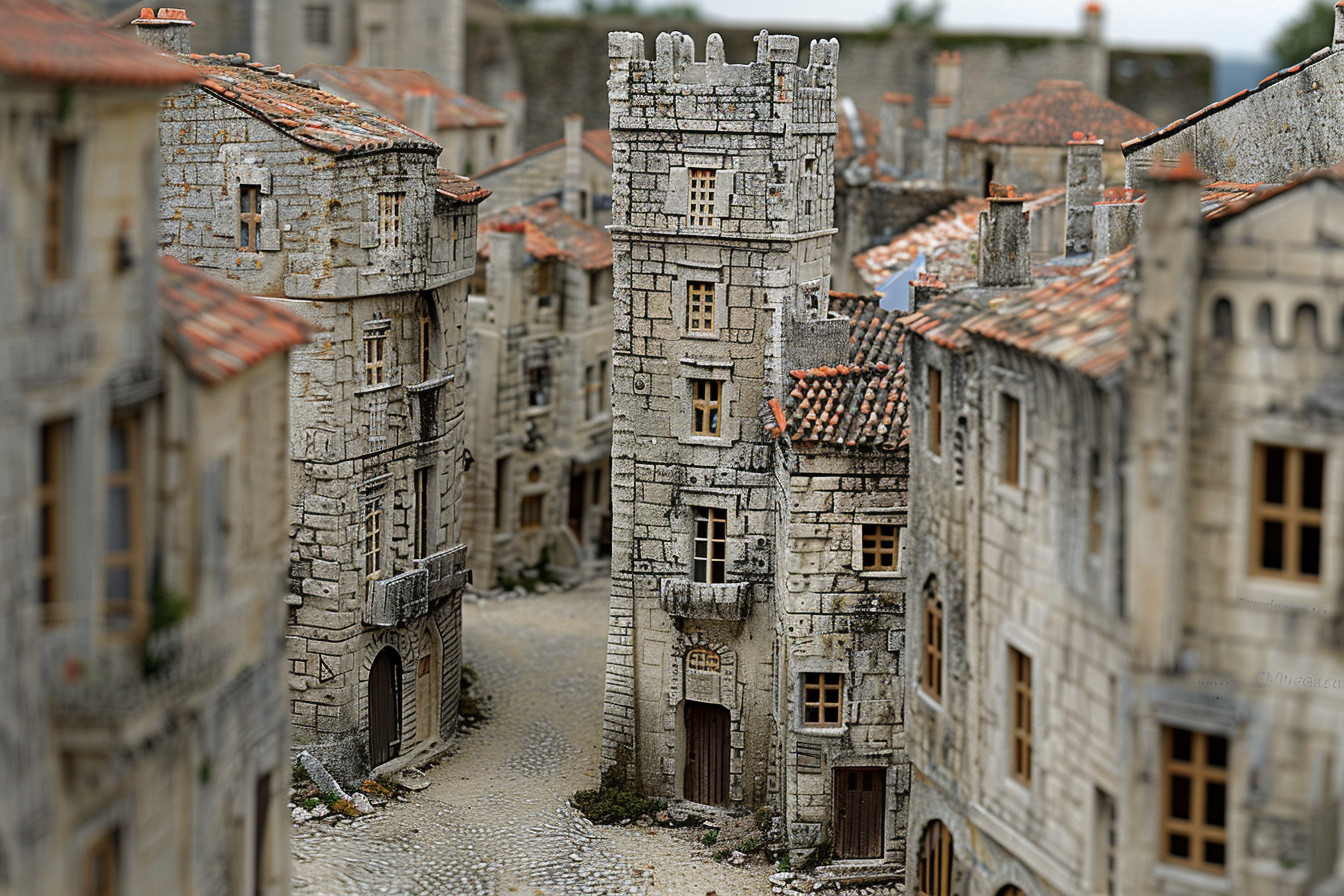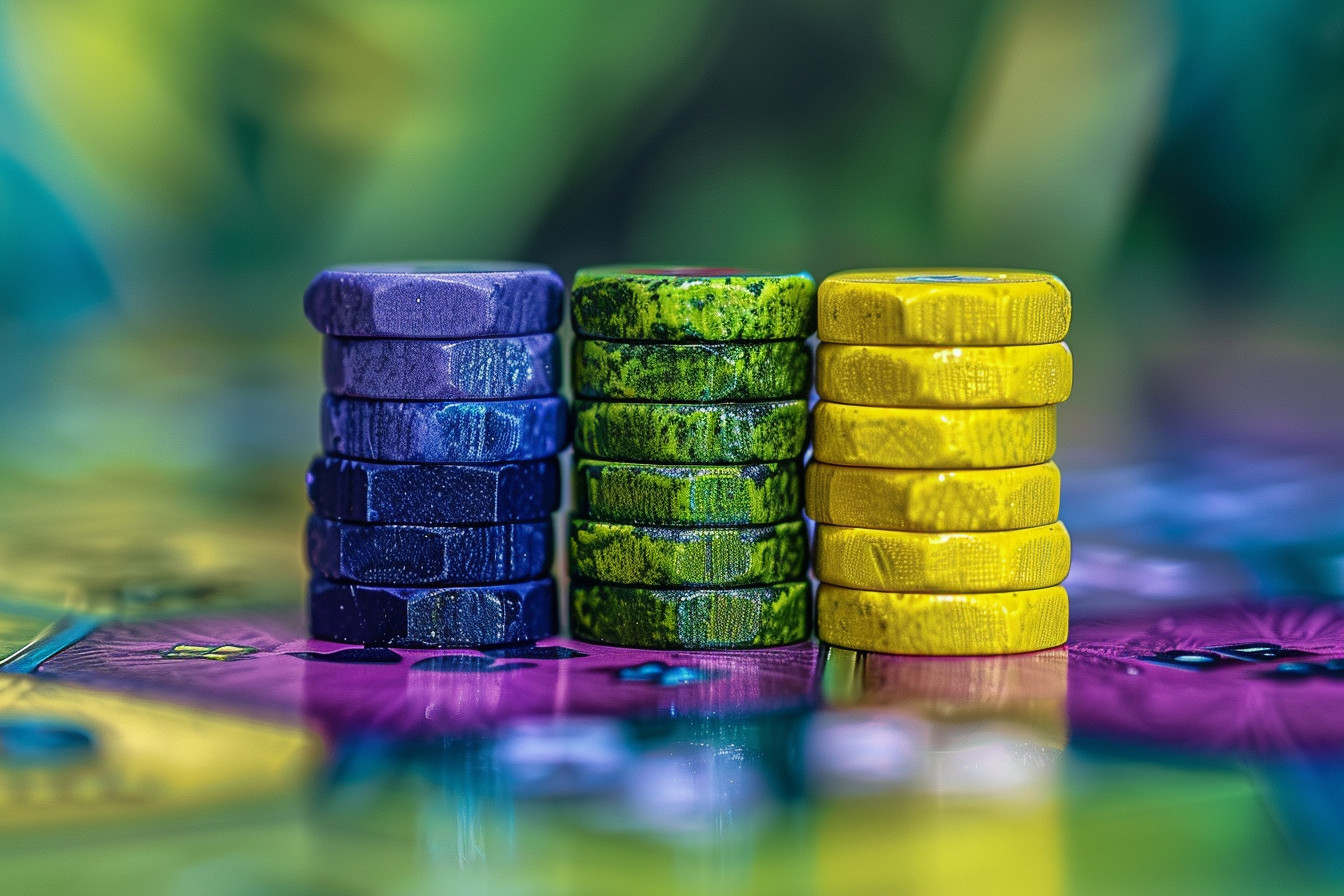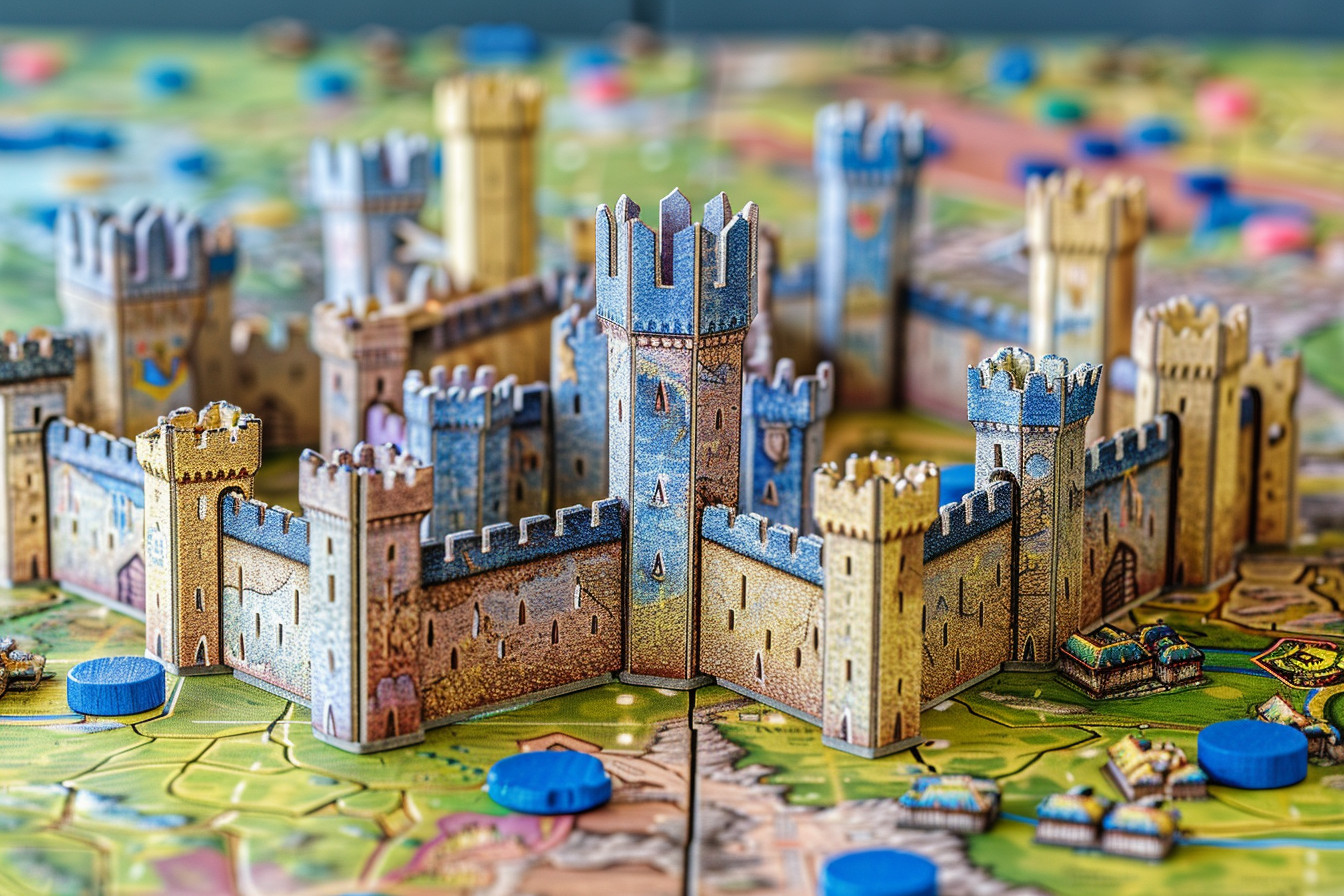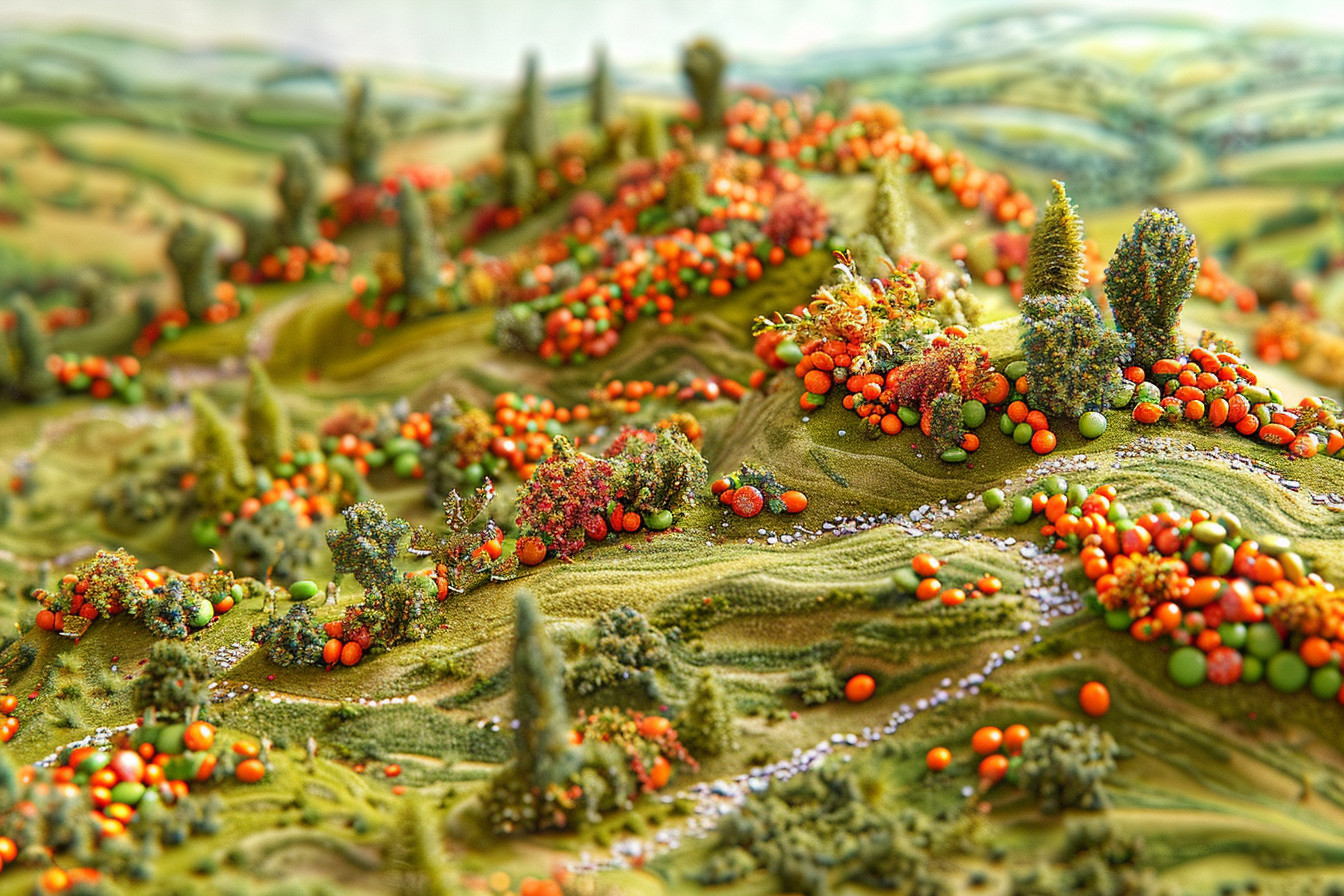The hearts of many international players have been won over by the board game Carcassonne. It’s a modern classic with a medieval theme for fans of tile games in which they can plot their strategies and play with just enough luck of the draw. Yet, simple rules and straightforward play mechanics make Carcassonne just as accessible for casual gamers as experienced ones.
The first time I played with friends, I could see why the game belonged to their elevated game collection and why it was already part of mine. Carcassonne appeals because of its “elegant mechanics.” Building roads and cities, claiming farmland and cloisters, are the means to deceptively straightforward scoring in which your choice of where to build what with just a limited number of tiles and no pieces that belong to you once you’ve placed them, makes you as much master and/or servant of the point system as you are of the varied terrain on the game board.
The simplicity of Carcassonne is what makes it beautiful. Each turn, you pull a tile and put it down next to the ones that came before it, creating an ever-surging geography of little wooden figures—your “meeples”—that staff your castle, your cloisters, your farm, or your road. These followers don’t move; they just stand there collecting points. Every so often, there’s a scoring opportunity, and your landscape becomes slightly more rickety as it strains to accommodate more tiles.
Carcassonne’s unambiguous regulations make for a thrilling game that draws in participants. Is it as static as it seems, or is it quite the opposite? Does Carcassonne enthrall? Well…count the numerous games that have been played and replayed. The reason is simple: Carcassonne is very much alive. And despite the impossible-to-miss didactic element of the game, it offers a certain serendipitous quality that allows for a unique tableau every time.
My family has a tradition that when we play Carcassonne, the youngest player draws the first tile. Once everyone is prepared to start the game, we let this simple ritual mark the beginning of our “playtime.” During your turn, you’ll have two actions available to you: draw a tile and place a follower or take a follower back. Depending on the state of the board right after the next player’s turn, your followers will end up in one of five spots.
The game really seems to build the world naturally. It starts off with each player taking control of one small section. But by the end, each of these sections has been expanded into a coordinated shared world that comes across, visually and thematically, as a single natural kingdom. Setup is very simple, and from there, the game takes off quickly. Young players seem to understand it well, and even to enjoy playing the expanded world, sitting at the center of two sides. And yet, the game is also very much appreciated by its older audience, which loves to both dive into its various scenarios and to marvel at its beautiful visuals.
How to Play
Where the magic really happens in Carcassonne is in its gameplay. Your turn consists of pulling a tile from a bag and placing it adjacent to one or more tiles that are already in play. You can lay the tile in any orientation you want, as long as the tile you’re placing it next to has similar edges. After you place a tile, you can put one of your wooden “people” (we’ll call them meeples, like the box does) on the tile. The meeple can go in any one of the tile’s segments—be it a city, a road, a field, or a cloister—that aren’t already claimed by another player’s meeple.
Determining where to put your meeple is critical. Various places allow different types of scoring, with each having its own set of rules. A meeple placed in a city, now a knight, earns points for the city upon its completion. A meeple placed on a road, now a thief, earns its points once the road is complete. These pay out right away. But a meeple placed in a cloister as a monk doesn’t earn its points until the end of the game. And don’t forget the meeple placed in a field as a farmer. This one also waits until the end of the game to reap its big reward.
An unforgettable game night found me locked in a virtual dead heat, vying with a friend for control of an enormous, bustling birds-of-a-metropolis building see-saw. The game’s tension grew with each round. Our nerves frayed over the course of more than a dozen turns, with us just waiting for that last and longed-for city tile to finally show up and put us at ease.
The match goes on until every tile is put down. At that moment, incomplete features still yield points—but usually not as many as if the feature had been finished. The player with the most points is the winner. Carcassonne has a nice mix of tile placement and meeple placement, keeping every game within the realm of “same but different.” It’s all so very good, and on top of the tactical/strategic decisions, there’s the story that the world of Carcassonne keeps telling us.
Carcassonne is simple, deep, and infinitely replayable. Actually, those are really the game’s strengths. As far as the game goes, it does what it does quite well. To go along with that, the game is just very good—a mix of interesting (yet totally simple to understand) decisions, and the kinds of tugs-of-wars and unreadable standoffs that make for great gameplay. You move to Carcassonne’s rhythm, and that makes its pacing remarkable.
The game’s landscape changes with each play because of the randomness of the tile drawing. That ensures that the sets and scenarios that pop up never repeat themselves from one game to the next. The strategies themselves vary widely and can offer a good deal of adaptability for the player in their play style and decision-making. You can go tall, you can go wide, you can go all in and claim so much space with an appearance of heightened risk, if not audacity.
The game also excels when it comes to player engagement. Each choice of tile placement or meeple deployment sets up a direct conflict with the player on your left or right. The tiles and meeples that you and your opponents fight with and for are fuel for the game’s decisions and feed the game’s victory points engines. Over the course of the game, the tiles and meeples will murder more of your opponents’ dreams than your own sweet dagger ever could and will make knights out of more meeples than could charge out of the medieval gates.
My favorite part of Carcassonne is how good it looks and feels. The tiles that make up the game are like little works of art. And when you have claimed a tile with a “follower” , you have a pleasing, tactile experience. It’s great fun to see the Carcassonne world you’re building grow and change and to participate with your pals in the construction and deconstruction of a medieval landscape.
Carcassonne, though a robust and largely well-executing game design, does have some prominent criticisms leveled against it. The first and foremost of these is the charge that it can be far too reliant on luck, particularly where crucial tile draws are concerned. If you are pursuing a particular strategy and constantly find yourself drawing tiles that are of no apparent use to you, it can be seriously annoying. At its worst, this can make the game feel far too random, as if it is not possible to effect any sort of forward thinking or planning.
The pacing could also be better. It is generally a fast-moving game—quick to set up and quick to play. But it can stretch out to be a slow game, especially when it is played with too many people or any person who can’t quite decide how to play. The situation of a player taking what feels like too much time in trying to make a decision is familiar to all except those who don’t know this game’s setup.
Playing Carcassonne with two people is not always the most fun. It is an excellent game—don’t get me wrong—and I love it. But some of the magic of Carcassonne is lost when you’re only duelling with one other person.
There’s a reason for that. With two people, Carcassonne can become quite boring quite quickly, because each player will either be trying to do exactly one thing or the exact opposite. And those two possibilities don’t amount to much.
Moreover, the endgame can bewilder some Carcassonne players—especially beginners—if they have not kept track of the ever-changing point situation throughout the game. That’s largely because of what happens during the final scoring phase when the player who has the majority of farmers in play reaps seemingly unfathomable rewards.
Final Thoughts
For good reason, Carcassonne is a much-loved classic in the board game community. It mixes simple game rules with just the right amount of strategic challenge and player interaction to create a title that has continued to captivate gamers since its original 2000 release. I have matched wits with friends and family on many occasions, and each and every encounter has provided a fun and engaging tabletop experience.
One of the greatest strengths of this game is how accessible it is. You could be playing with people who are real experts at playing board games or you could be playing with people who are new to board games, and Carcassonne would be just as easy for both groups to pick up.
The rules are not complex; in fact, the rulebook is one of the shortest I have ever seen for a board game. Once you start playing, the game makes a lot of intuitive sense. And even though a lot of the strategy revolves around how you place your tiles and where you place your followers, it also never devolves into something that feels like “work.” Overall, if you can find it for a good price, snap it up before someone else does.







